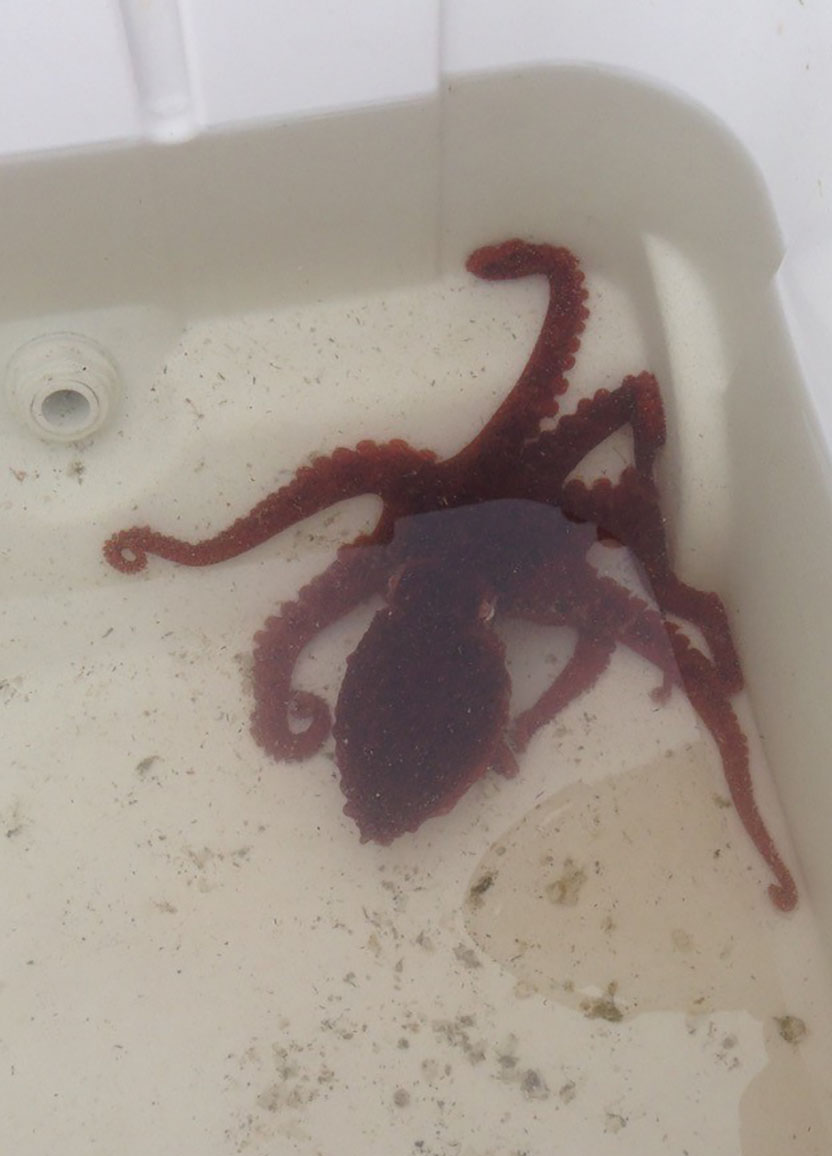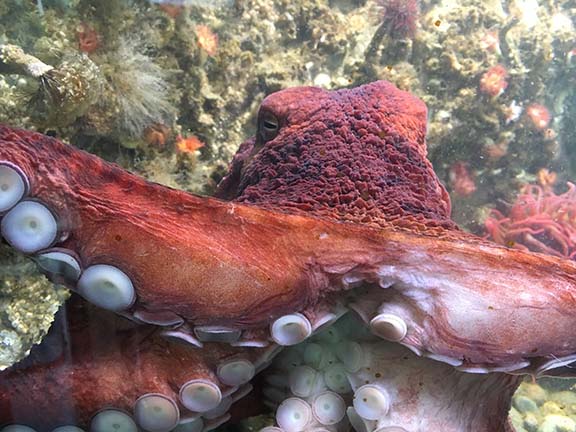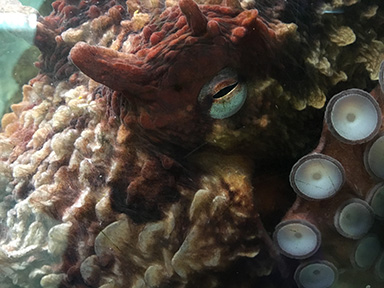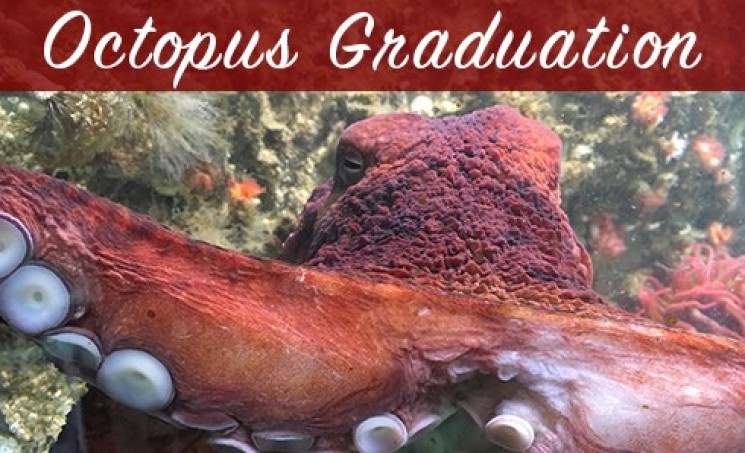Free and Open to All
Saturday, June 11, 2016
10 a.m.–2 p.m.
Highline College’s MaST Center
Like many proud parents, Rus Higley heaps praise on his soon-to-be graduate.
“She has grown so much while at Highline College and developed a real personality. She seems to find it highly amusing to squirt staff and visitors and can aim and get them right between the eyes,” Higley said of Salish, a giant Pacific octopus who has resided at the college’s Marine Science and Technology (MaST) Center since October 2015.

At approximately 18 inches in length, Salish, a giant Pacific octopus, is shown shortly after being collected and before being placed in an aquarium at Highline’s MaST Center in October 2015.
The MaST Center will hold its annual Octopus Graduation event on Saturday, June 11, 2016, 10 a.m.–2 p.m., to give Salish a proper sendoff as she is released back into Puget Sound by a dive team with an underwater, interactive video. The release will occur at noon and be broadcast via streaming online videos and live to the aquarium and classroom at the MaST Center.
“We’ve had a lot of fun with Salish since we collected her from local waters last fall,” said Higley, who manages the MaST Center and has worked there since it opened in 2003. “We’ve seen her grow from about 18 inches to more than 72 inches. When full grown, she’ll be more than 15 feet in arm span.”
Octopuses usually stay at the MaST Center for six months on average, during which time they reach 7 feet to 9 feet in length.

Rus Higley
“At that size they start to get a bit friskier. We are also limited by the size of our tank,” said Higley, who noted that the Seattle Aquarium with its much larger tank releases them in the 12- to 15-foot range. “It sounds like a big difference, but she is growing fast and would reach that size in another six months.”
The event is free and open to the public. Cake and light refreshments will be served following the release. Attendees should arrive early for best viewing, as space is limited.
Asked if Salish will wear a cap and gown during the ceremony, Higley replied, “No, I challenge you to dress someone with eight arms and no bones.”

Now with more than a 72-inch arm span, Salish enjoys squirting staff and visitors at the MaST Center, one sign of the frisky behavior that indicates it’s time to release her back into Puget Sound waters.
Located on Puget Sound’s Redondo Beach, Highline College’s MaST Center is a 2,500-square-foot marine biology and aquarium facility and serves as a teaching institute and public learning center. Its aquarium holds 15 tanks, displaying more than 250 native marine species.
Typically, one or two octopuses reside at the MaST Center at any given time including the giant Pacific octopus and the much smaller red octopus. Octopuses have been on display since 2003, but graduation ceremonies didn’t begin until 2011.
The mission of the MaST Center is to promote understanding, appreciation and preservation of the marine environment through hands-on research, education and community activities that highlight the beauty, complexity and importance of the south Puget Sound ecosystem.
The center is open to the public every Saturday from 10 a.m. to 2 p.m. for Discovery Days, a community open house featuring facility tours, guided experiments and interpretive displays. It is located at Redondo Beach next to Salty’s restaurant.
Questions?
Contact Rus Higley at (206) 715-0576 or rhigley@highline.edu.
 Question:
Question: What has three hearts, is about 90% muscle and can fit through an opening the size of a quarter?
Answer:
You guessed it, an octopus. Because it doesn’t have bones, octopuses can fit through very small openings.


